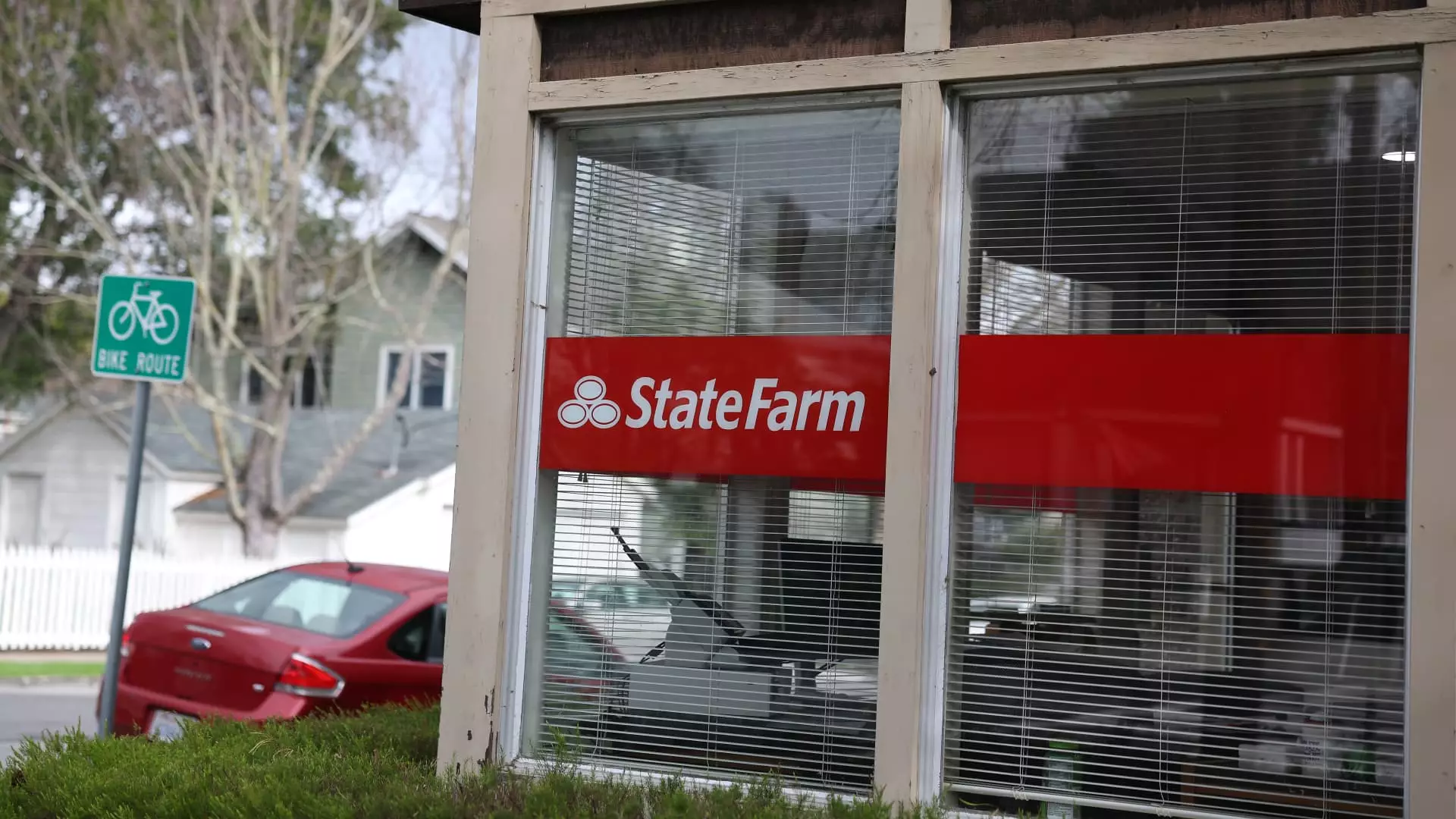This week marks a pivotal moment for State Farm, one of the largest property insurers in California, as the company seeks approval for a substantial rate hike during a contentious hearing in Oakland. The stakes are incredibly high, both for the insurer and the millions of Californians who rely on its services. In the wake of catastrophic wildfires in Los Angeles—deemed the most costly natural disaster in history with damages soaring between $250 billion and $275 billion—the situation for State Farm has become reminiscent of a sinking ship. An attorney for the California Department of Insurance likened the insurer’s plight to that of the Titanic, warning of an impending crisis that could leave millions without lifeboats.
The urgency of the hearing is underscored by State Farm’s desperate appeal for an emergency rate hike. Initially seeking a stunning 22% increase, the company has since scaled back its request to 17% for homeowners and an even steeper 38% for renter dwelling policies. This maneuver speaks volumes about the precarious state of California’s insurance market and the alarming trend of rate increases becoming the norm in a region increasingly susceptible to catastrophic events.
The Financial Fraying of an Industry
The dire financial status outlined by insurance regulators is not merely a story of one company’s struggles but a reflection of an industry in crisis. For years, insurers in California have faced mounting losses, exacerbated by the frequency and severity of natural disasters. The torrential waves of losses have prompted State Farm to retract from the market, refusing to write any new homeowner policies as of May 2023 and announcing the non-renewal of 72,000 existing policies. This withdrawal underscores a dangerous cycle: with fewer insurers willing to operate in California, competition wanes, repercussions for consumers escalate, and the insurance landscape shifts ominously.
The grievous consequences of this retreat are evident, with many homeowners left with no options except to turn to the state-run FAIR Plan—an emergency safety net that, unfortunately, lacks sufficient capacity to handle the flood of demand. This situation evolves into a classic dilemma where the need for insurance amplifies as natural disasters become more frequent, yet the market’s ability to provide adequate coverage diminishes.
A Dichotomy of Opinions
While State Farm contends that increasing rates is essential for financial stability, dissenting voices within the community are becoming increasingly vocal against these hikes. Consumer advocacy groups, represented by entities like Consumer Watchdog, argue that State Farm has failed to justify its requested increases adequately. Their concern is that the necessity for a rate hike is being presented without a solid foundation, treating policyholders as pawns in a high-stakes financial gamble. This skepticism is essential and valid; one cannot ignore the disconcerting trend of insurers asking for rate hikes without transparent disclosures or guarantees of improved service.
Interestingly, there exists a political element in this complex equation. Insurance Commissioner Ricardo Lara has shown reluctance to sanction considerable rate increases. The balance of power here is critical; it highlights the tension between corporate imperatives and the regulatory oversight meant to protect consumers. As representatives of the public good grapple with insurance companies’ seemingly endless demands for higher premiums, the question arises: Are these companies prioritizing survival at the cost of their customers?
The Path Forward: A Sustainable Insurance Strategy
In light of these challenges, California has proposed a “Sustainable Insurance Strategy.” This plan aims to reframe the insurance ecosystem, emphasizing the integration of catastrophe modeling and adjusting rates based on empirical data rather than mere conjecture. Advocates for this strategy, including Janet Ruiz from the Insurance Information Institute, argue that timely execution is essential to restoring equilibrium to what has become a disarrayed marketplace.
The hoped-for outcome of such strategies is not merely to stabilize insurers but to rehabilitate the trust of California residents in the insurance system. For an industry built on the promise of support amid uncertainty, the current trajectory—in which consumers are increasingly left high and dry—creates a toxic environment for both businesses and consumers.
Ultimately, State Farm’s actions, enacted within this environment, serve as a reflection of a broader struggle within California’s insurance market. While an increase in rates might afford some relief to State Farm’s precarious position, it simultaneously raises red flags about the financial sustainability and ethical responsibility of insurers. The time has come for a serious reevaluation of how insurance operates in California, melding both the imperatives of profitability and the essential need to protect consumers during their most vulnerable moments.

